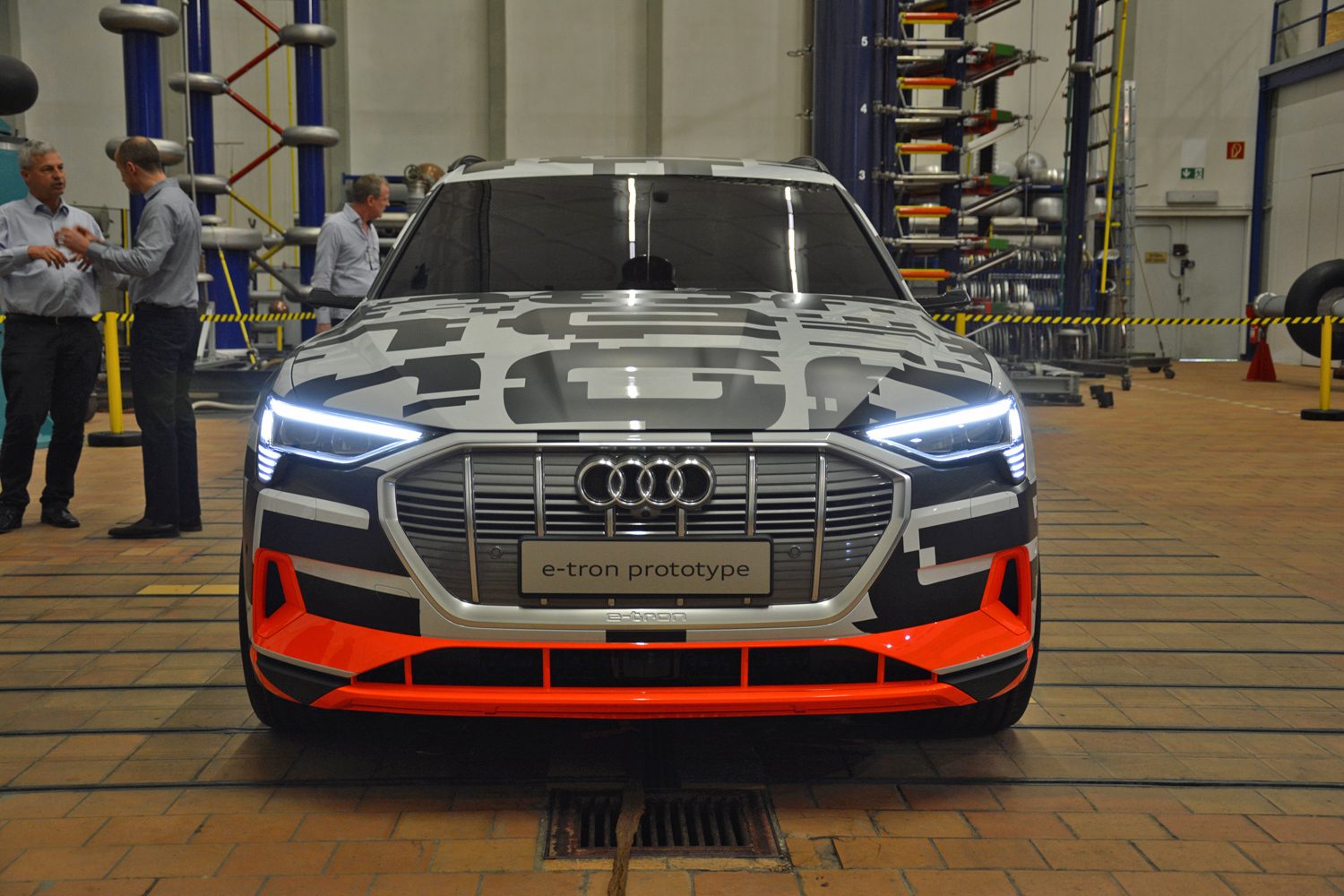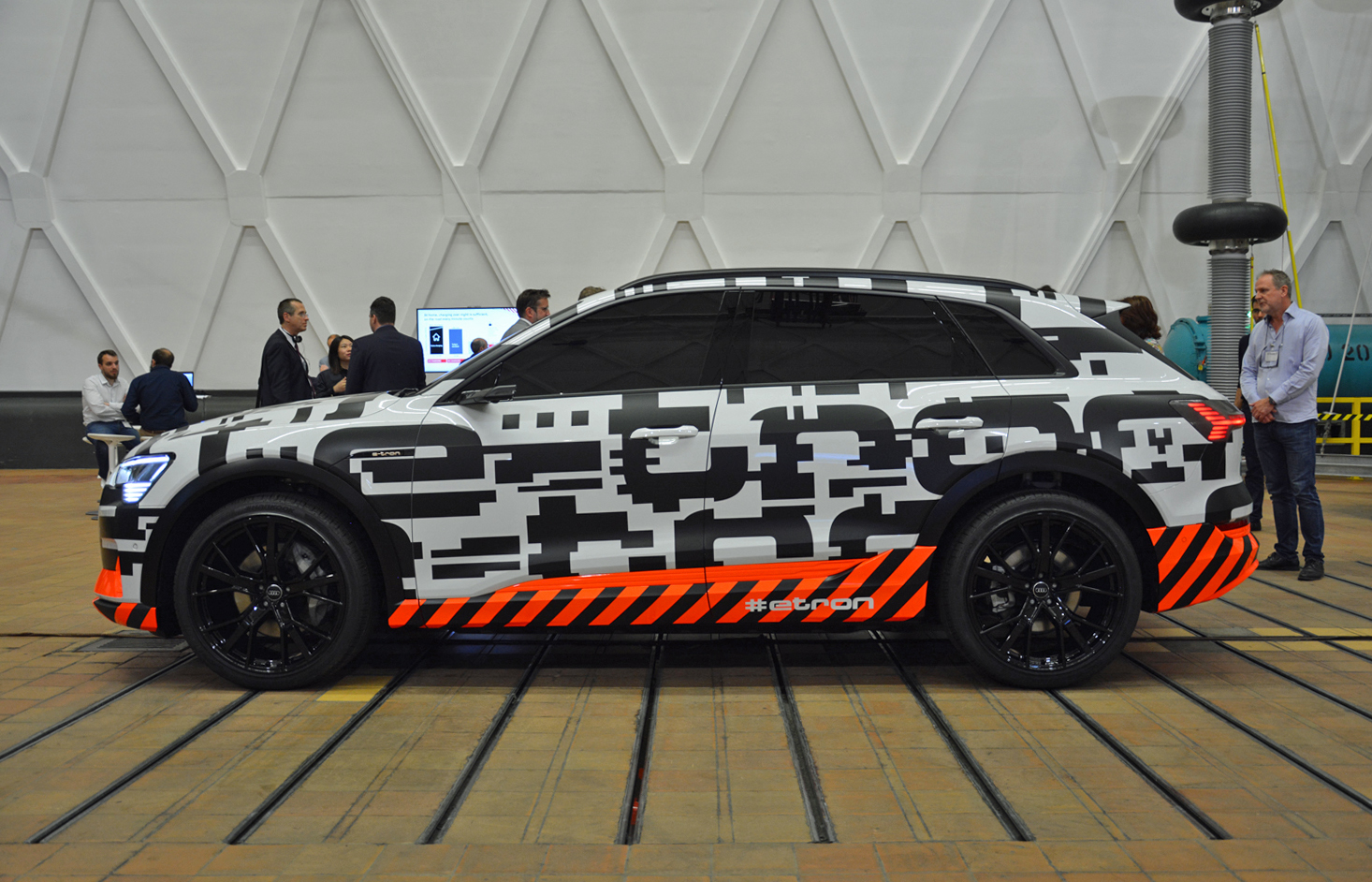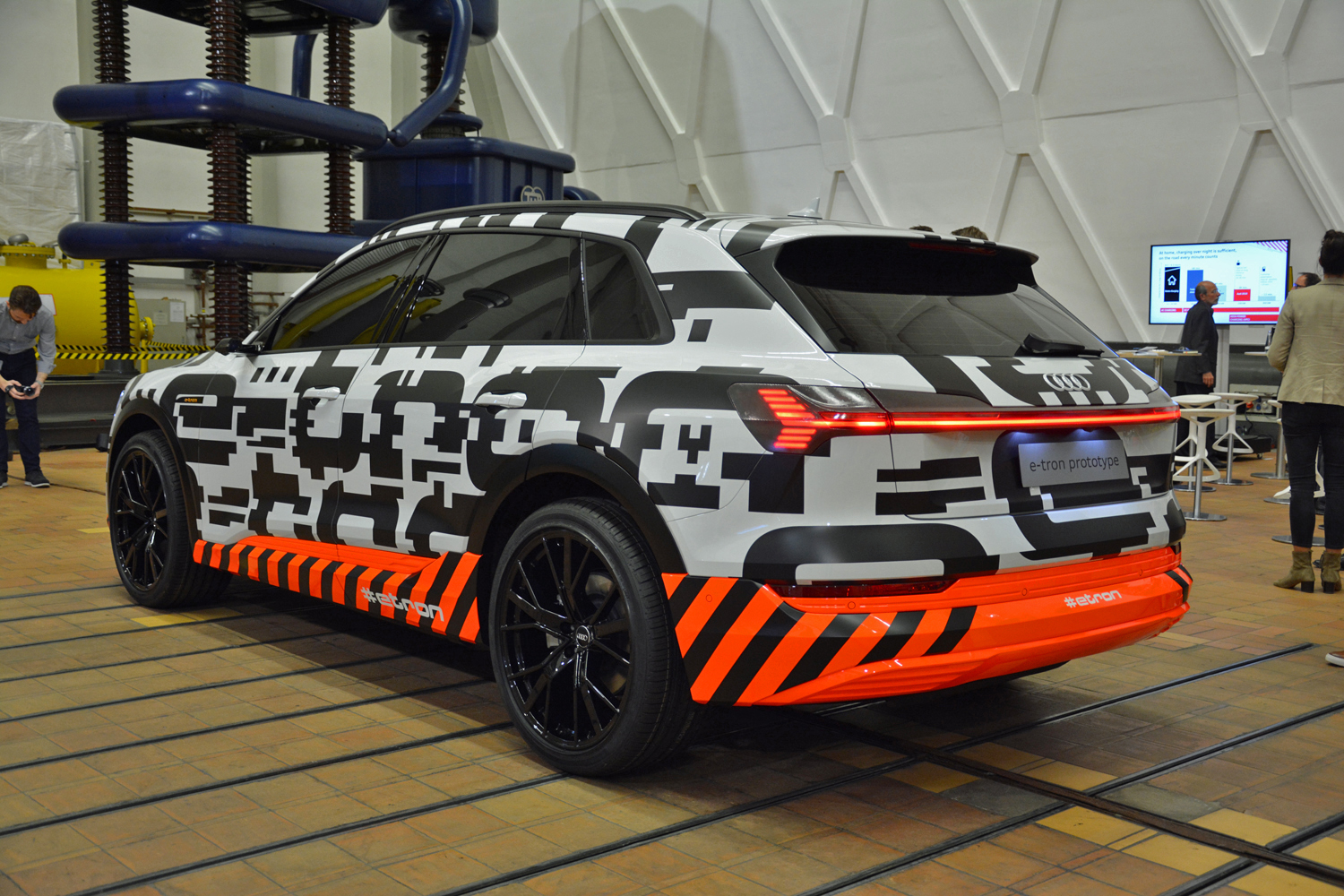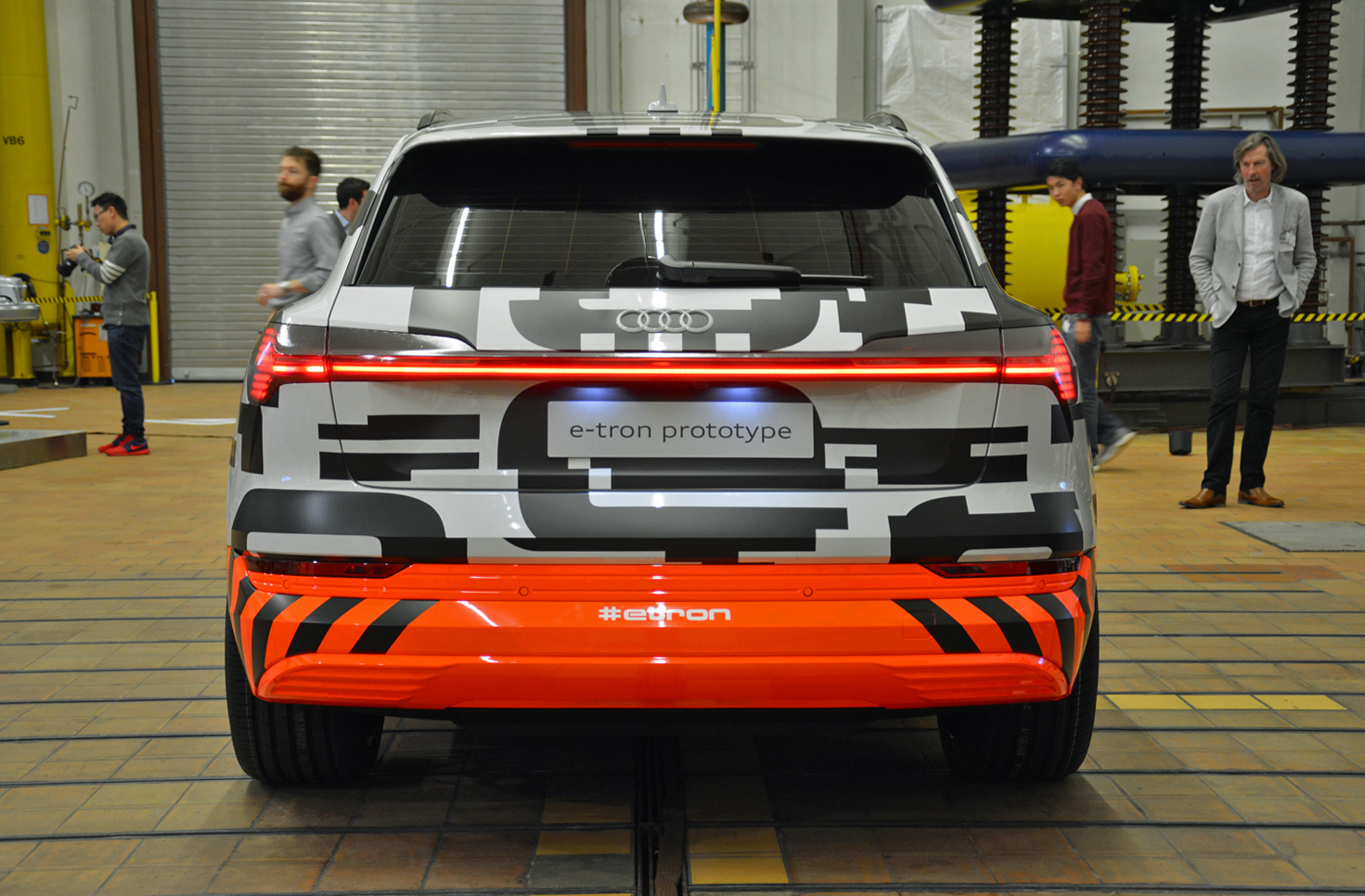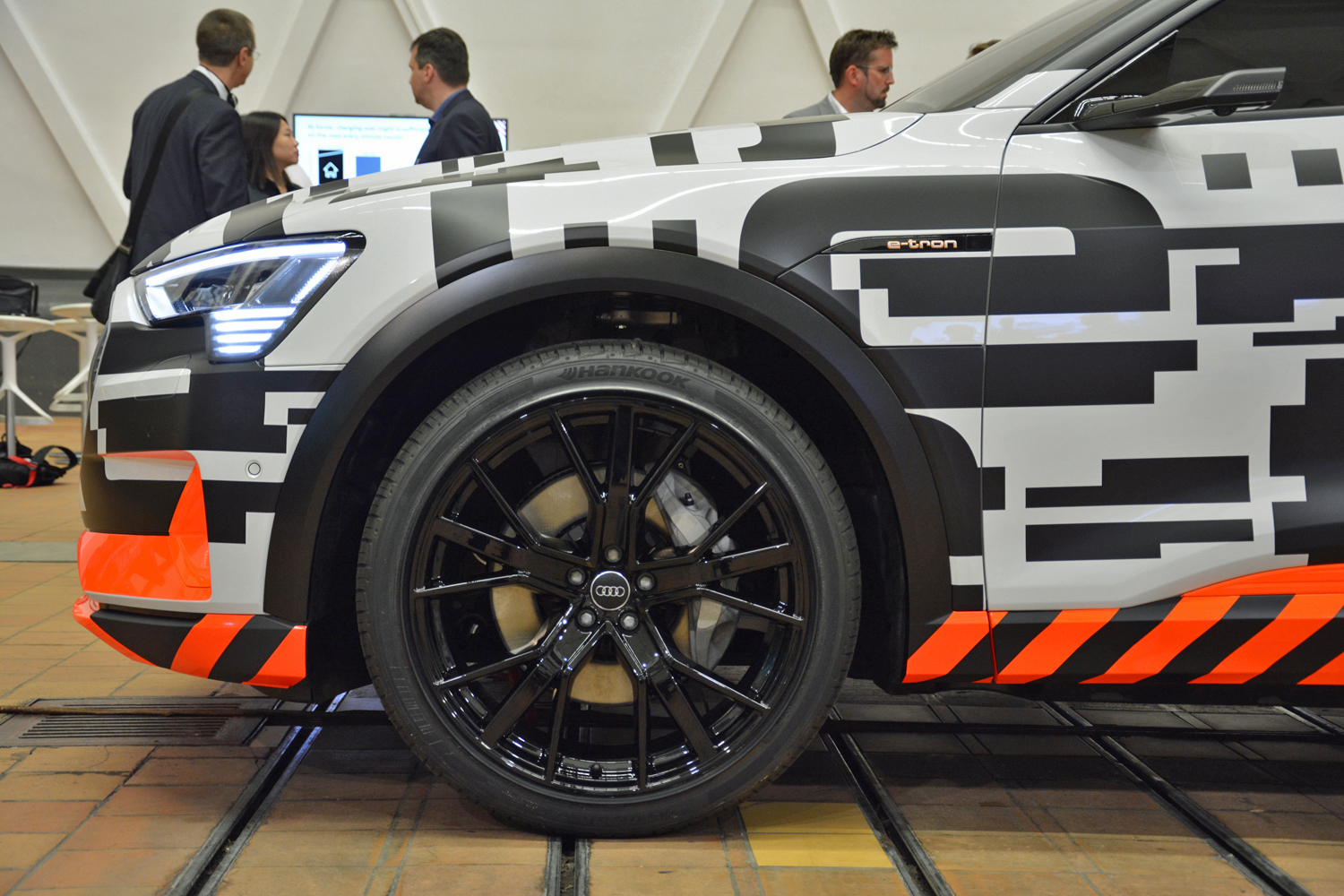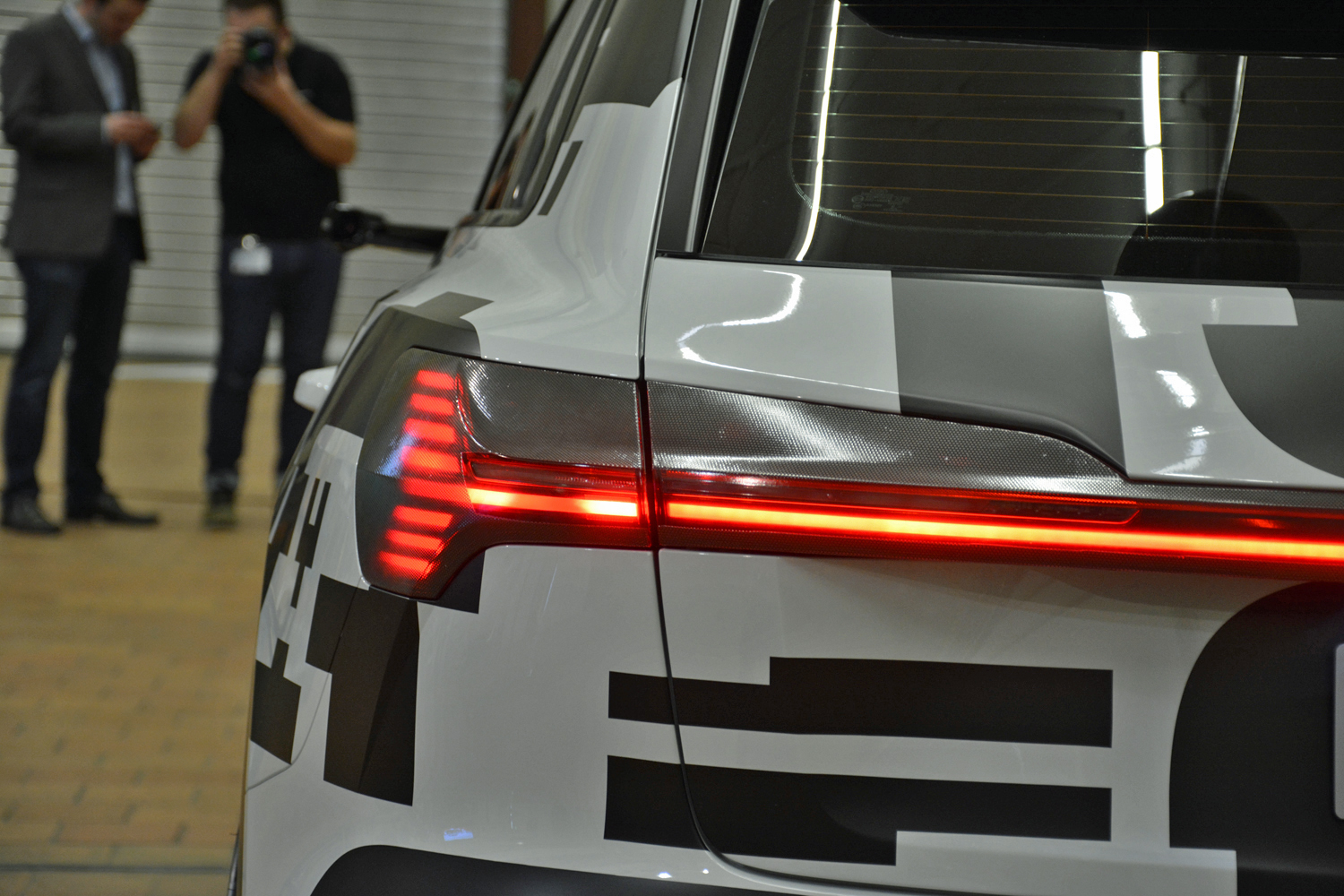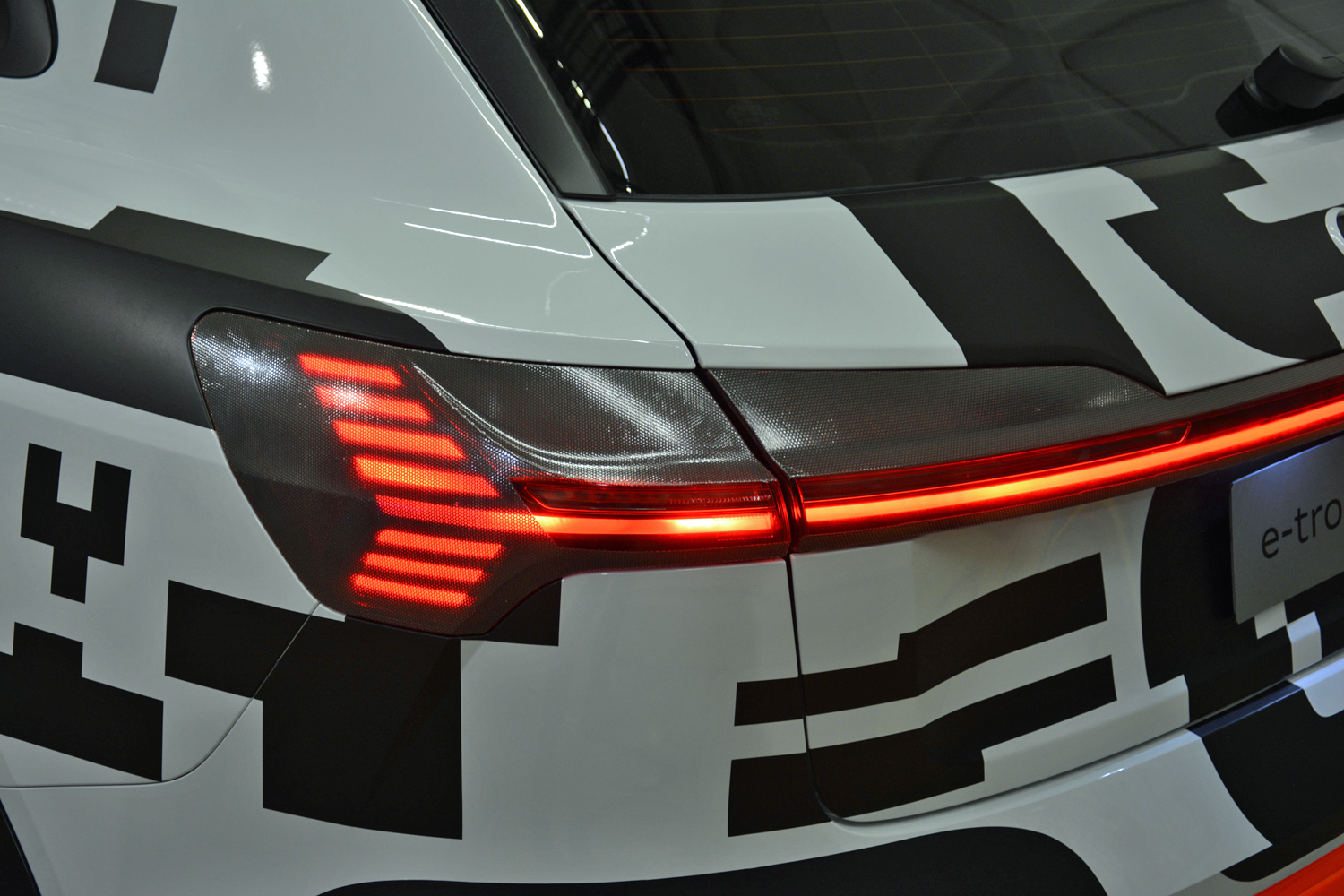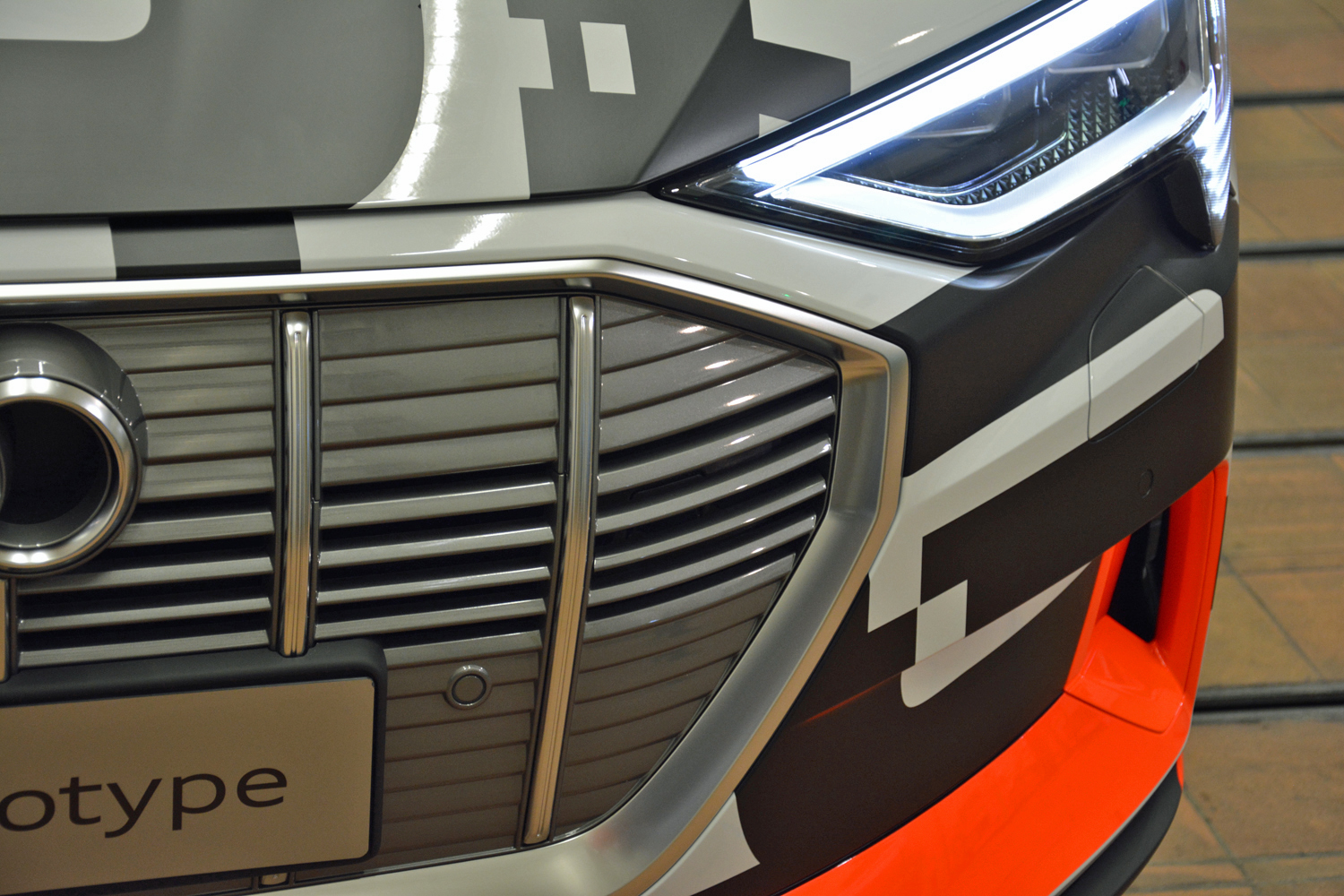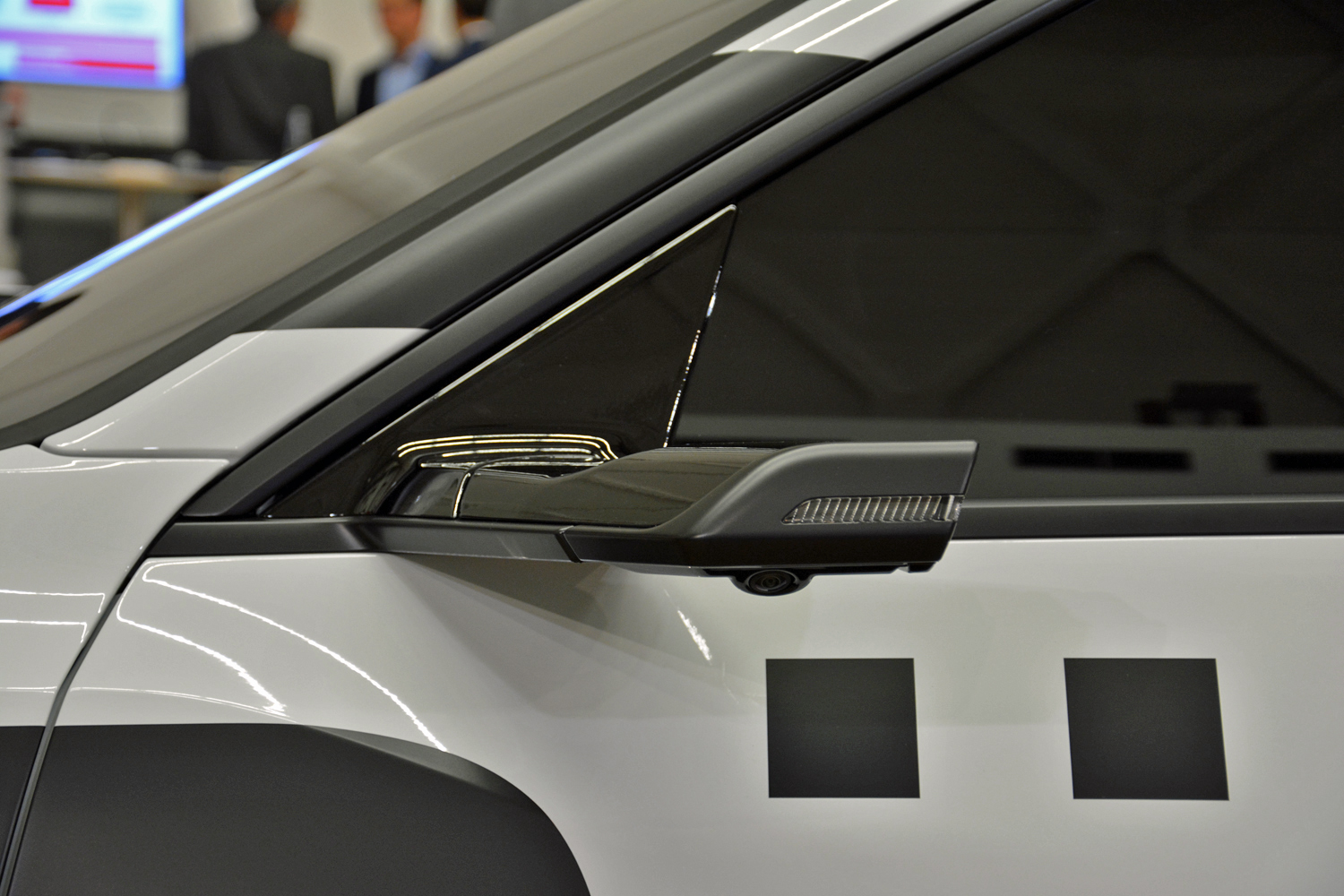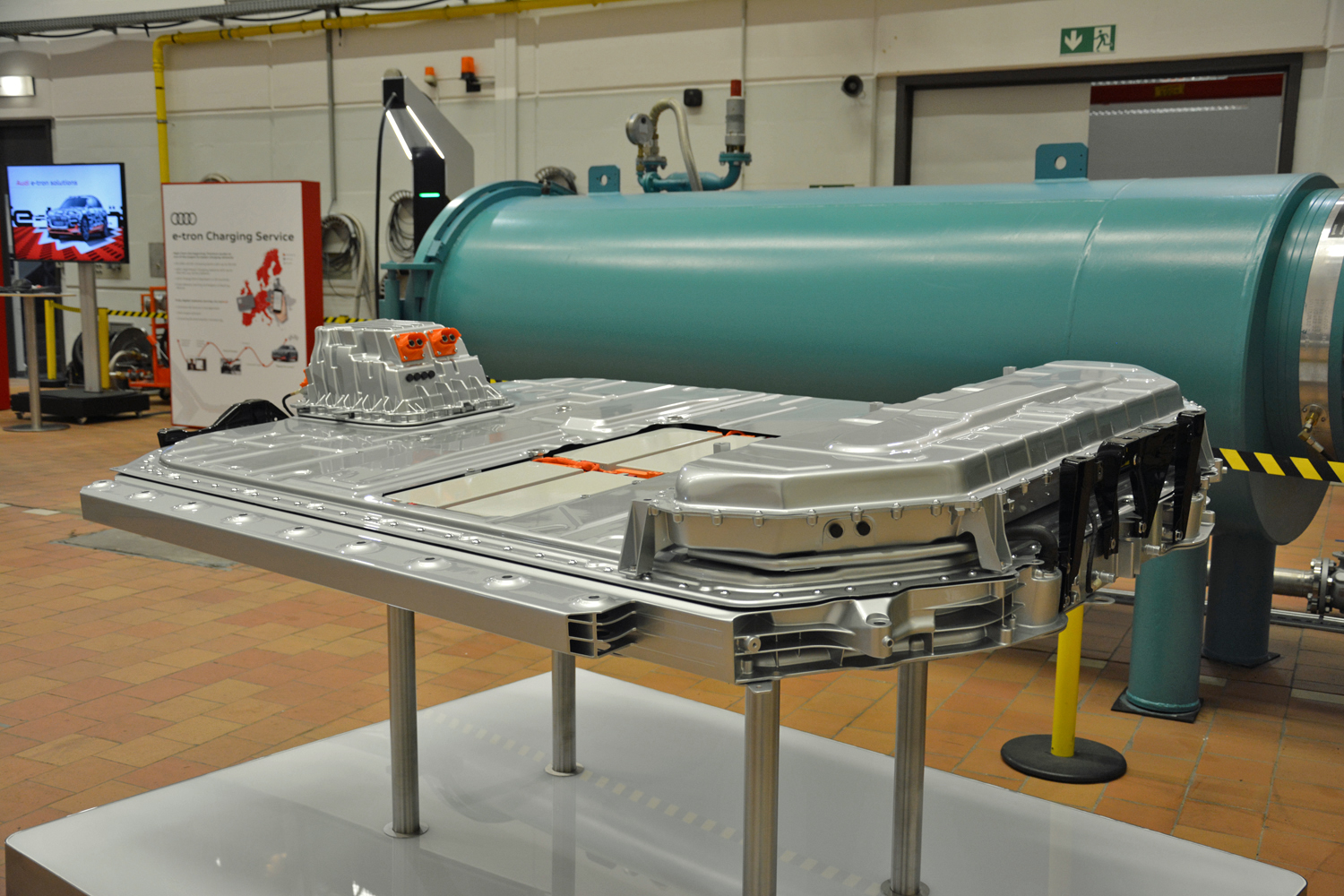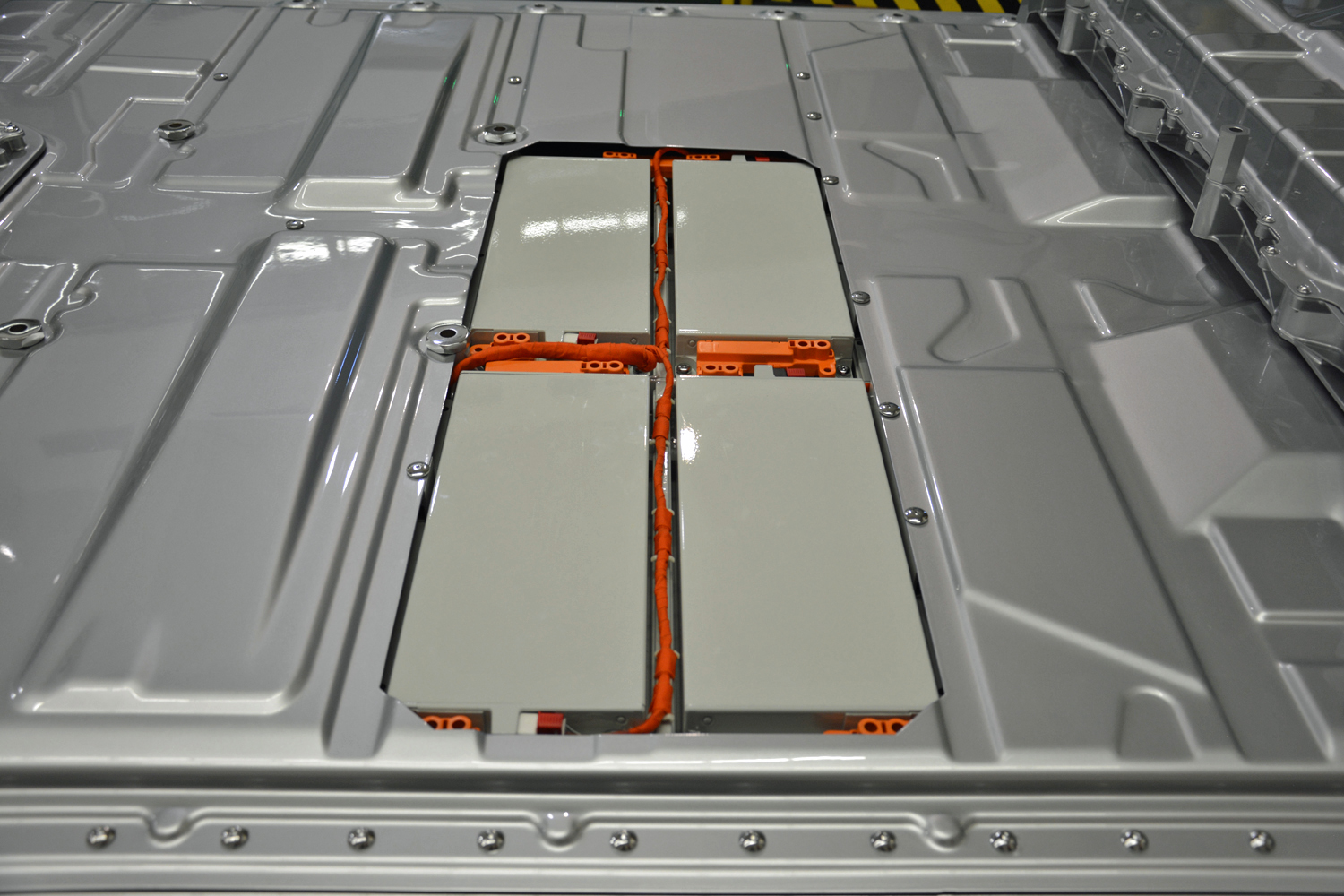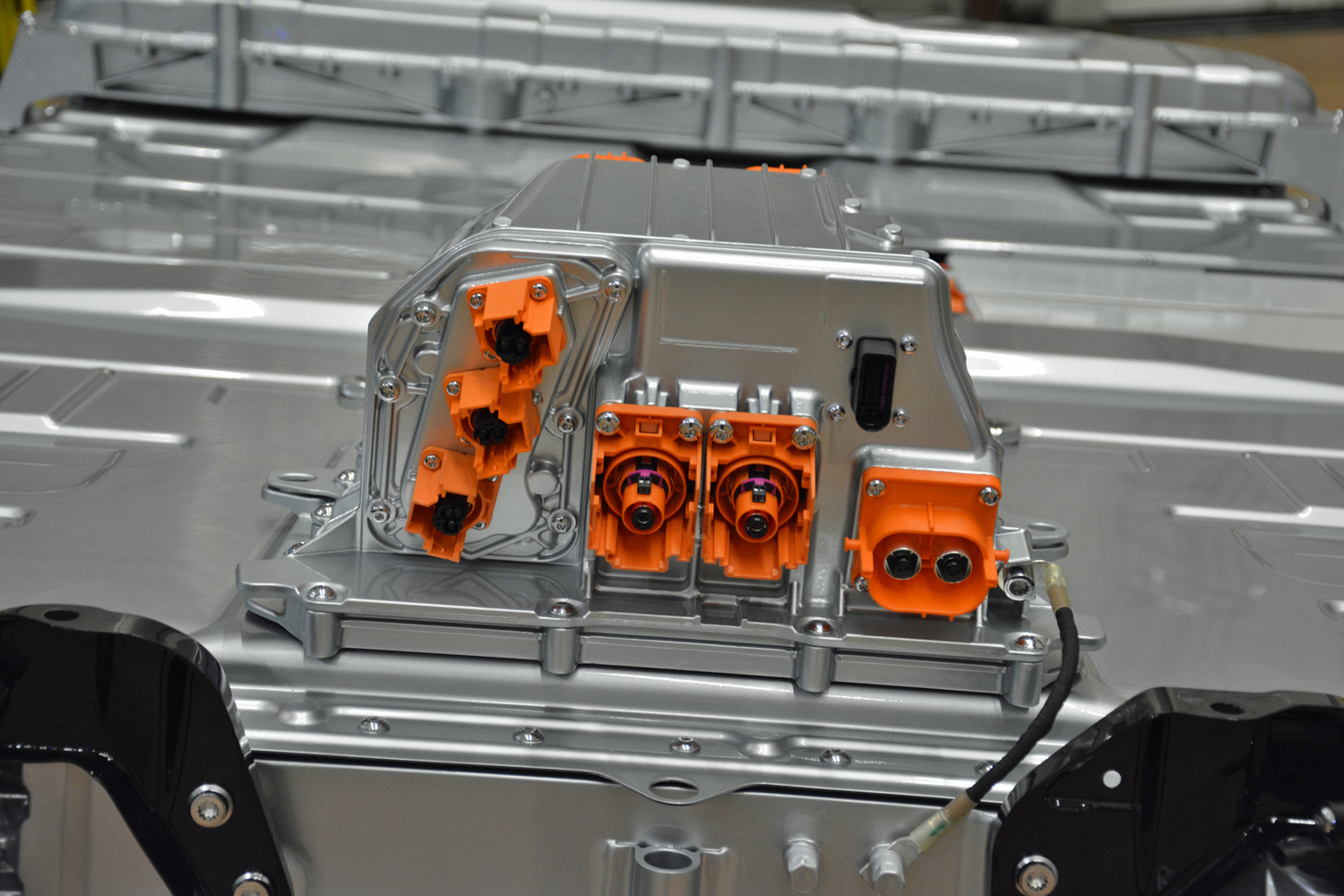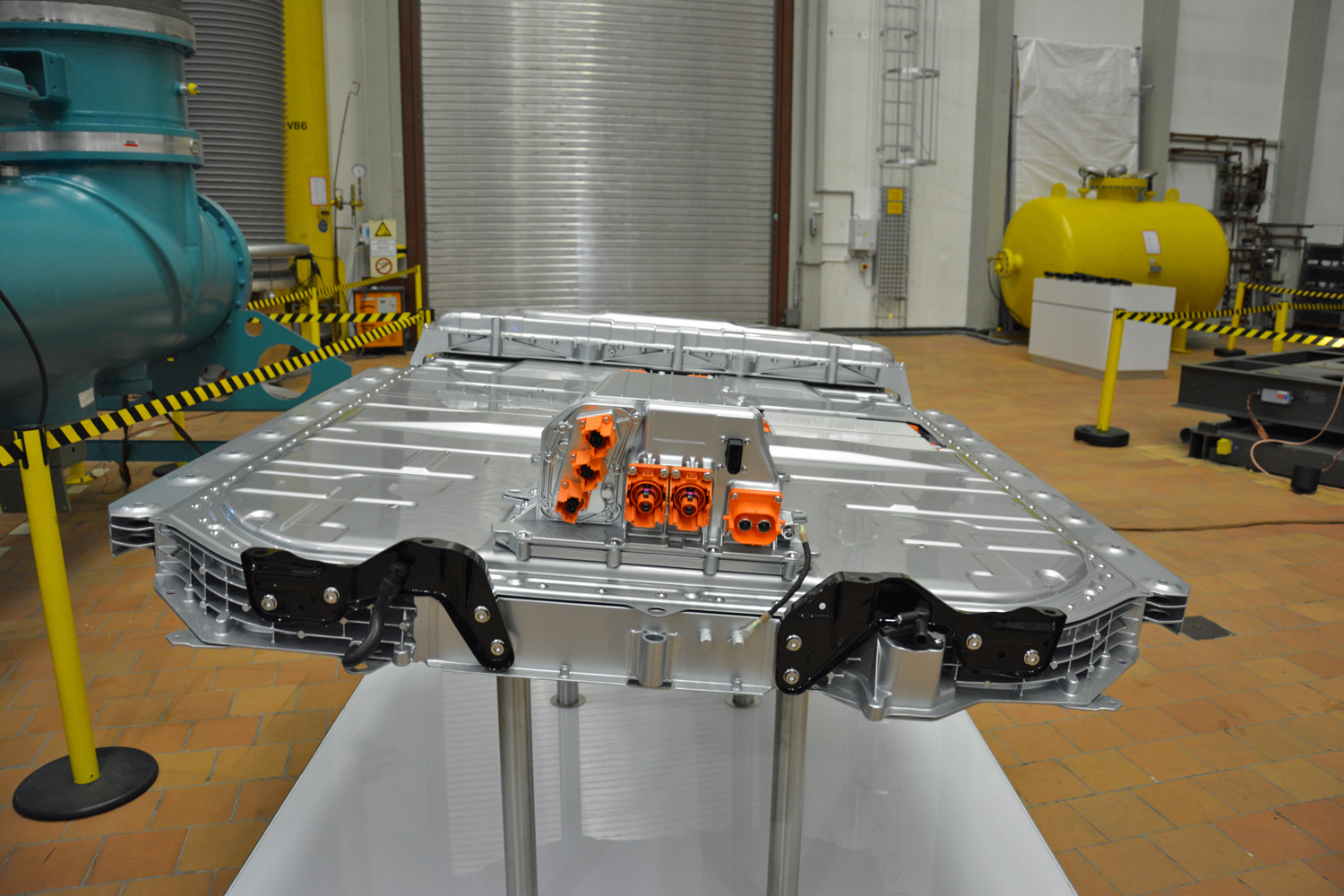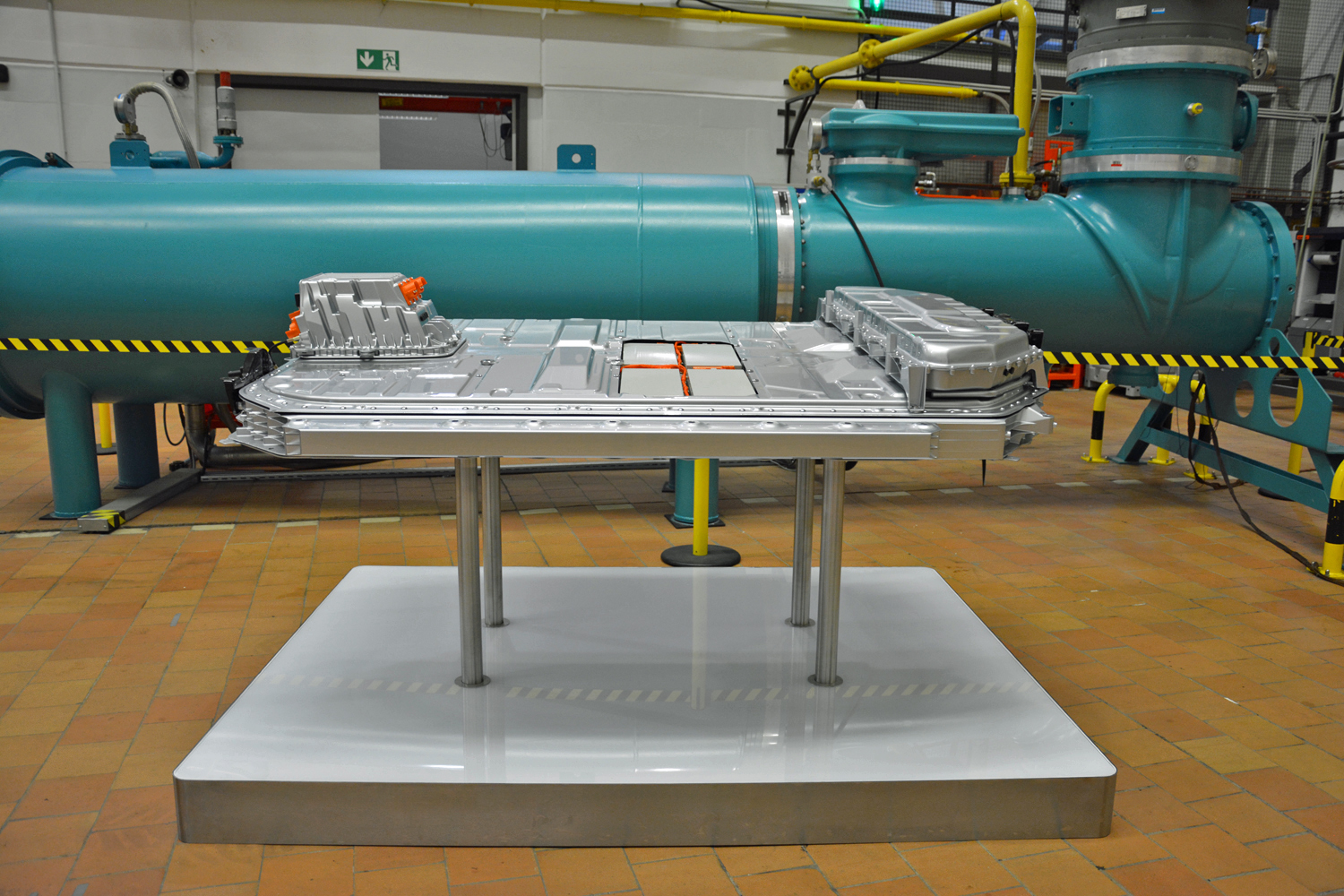Audi is as excited as a couple expecting its first child. Named e-tron quattro, the brand’s first series-produced electric car will break cover in just a few short months. We haven’t seen it yet, let alone driven it, but we’ve just heard its heart beat for the first time. The early ultrasound reveals electrification creates a car that’s fundamentally different than the firm’s other SUVs.
Though still fully camouflaged, the SUV doesn’t look the least bit electric. Nothing about its design or overall proportions hints at gasoline teetotalism. And yet, Audi designed it as an electric car from the get-go; there won’t be a version of the e-tron quattro powered by an internal combustion engine. Not at launch, not ever. The sheet metal hides an electrified version of the MLB platform used widely across the company’s lineup. In this application, it’s built around a 1,576-pound, 95-kWh lithium-ion battery pack mounted directly under the passenger compartment, right in between the axles. It’s about the size of a mattress but – sorry, Audi– it doesn’t look nearly as comfortable to sleep on. Tempur-Pedic, this is not. It’s got other tricks up its sleeve, though.
250 miles on a charge should be enough to meet the needs of most commuters.
Let’s dispel a myth: electric cars require cooling air. They sometimes need less of it than comparable gasoline-powered models, though it ultimately depends on the type of car and the drivetrain it uses. But, the idea that they don’t need air at all is a misconception. Just ask Audi; the company spent a great deal of resources developing an effective thermal management system, and it begins by funneling air through a grille and using it to cool a radiator. The system always maintains the battery pack between 77 and 95 degrees Fahrenheit, its optimal operating temperature. The chiller installed behind the left side of the front bumper kicks in when needed to provide additional cooling.
Significantly, Audi separated the cooling system (which is filled with a mixture of water and anti-freeze) from the battery cells to make sure they don’t end up drenched if the car rolls over. This could cause a short-circuit or, worse, a fire. The “safety first” approach led engineers add thick side beams that absorb and dissipate energy if the car gets t-boned. 35 bolts secure the battery pack to the rest of the car, and its thick aluminum housing doubles as a skid plate. It also gives the car a smooth, flat underbody that helps make it more aerodynamic.
Crack open the pack and you’ll find 36 shoebox-sized modules each packed with a dozen individual cells; those are the components that store the electricity. Audi explained paring down the number of cells facilitates the task of monitoring them by reducing the battery management system’s workload. Cells that no longer hold a charge bump down driving range so it’s important to identify the culprits.
So, what’s the range? Audi quotes approximately 250 miles in real-world driving conditions, though that’s on the European testing cycle. Numbers for the American market won’t be available until closer to the car’s market launch. That figure places it ahead of the Chevrolet Bolt and behind the Tesla Model X and the Jaguar I-Pace, two of its closest rivals. Your mileage may vary, though. It’s like commuting in a car with a gasoline- or a diesel-burning engine. If you describe your driving style as conservative, you’ll use less energy than your co-worker who drives flat-out, balls-to-the-wall from stop sign to stop sign; it’s basic physics. Range will also depend on which accessories (such as the heater and the air conditioning system) draw electricity.
Motorists will charge their e-tron at home about 85 percent of the time.
250 miles on a charge should be enough to meet the needs of most commuters, but Audi went the extra mile — pun slightly intended — to quell range anxiety. The brand’s market research shows motorists will charge the e-tron at home about 85 percent of the time. On-the-road charging (at charging stations installed on highway rest stops, for example) and destination charging (e.g., at Starbucks, at the mall, or at the office) will each represent between five and 10 percent, depending on the user and the geographical area.
To that end, Audi will offer two home charging solutions. The basic 11-kilowatt charger takes eight and a half hours to top up the battery pack. That sounds like a lot, and it is, but it’s fine for someone who gets home from work and doesn’t leave again until the next morning. The faster 22-kilowatt option slashes that time to four and a half hours. When a full charge won’t cut it, there’s a trip planner application that will help owners pick the best route, find charging points along the way, and provide an accurate estimated time of arrival that factors in the time required to stop and top up the battery with an adequate level of electricity. It will display this information on the driver’s smartphone and, when requested, on the car’s dashboard-mounted touch screen.
We expect private businesses will build high-speed charging stations out of concern for the environment or, more realistically, to access the wallet of electric car owners who have 30 minutes to kill before they can hit the road again. Electrify America, a company created by the Volkswagen Group to improve the charging infrastructure, will also build a network of 290 electric car charging stations across the nation by the end of 2019, including some planted outside of select Walmart locations. E-tron owners will have access to the network, though charging won’t be free. Pricing hasn’t been announced yet. That’s just the beginning of a much broader project.

“Infrastructure is a key aspect. People have to feel safe. I don’t mean that in terms of safety, I mean it in terms of ‘I am going to continue to be 100% mobile.’ They want a way of filling up, and they need to have multiple options along the way, regardless of where they’re going. There is going to be a great increase in the presence of charging stations, which in turn will provide customers with a lot more peace of mind,” Filip Brabec, Audi’s vice president of product planning, told Digital Trends.
Proactively solving the infrastructure problem requires more than peppering America’ road network with charging stations. No one wants to sit on the side of I-80 for eight and a half hours, counting blue cars while waiting for watts to trickle into a giant battery. That’s why the e-tron will become the first volume-produced electric car compatible with 150-kilowatt charging, which is capable of zapping the battery with an 80 percent charge (roughly 200 miles) in 30 minutes. To put that figure into perspective, Tesla’s Supercharger stations top out at 120 kilowatts.
“Infrastructure is a key aspect. People have to feel safe.”
Filling up a tank of gasoline and paying for it takes about seven minutes, so zero-emissions road-trippers will need to take a laid-back coffee break. Faster 350-kilowatt charging will reduce the time required to obtain an 80-percent charge to about 12 minutes in the coming years, Audi predicts. Still, motorists who choose to go electric will need to tweak how they travel.
“It’s similar to how we learned to live with smartphones. We used to have cell phones with batteries that lasted a week. Now, we all carry around chargers. Airports have ways for us to plug in, hotels have ways for us to plug in, and so on. I think that sort of aspect, obviously on a different scale, is going to happen with electric mobility. We’re going to look at life choices differently,” he said.
Audi will introduce the e-tron quattro at the second annual Audi Summit it will organize in Brussels, Belgium, in August. It’s a country known for trappist beer and cheese, not electric cars, but the choice of venue isn’t as random as it seems; e-tron production will take place in a CO2-neutral factory located on the outskirts of Brussels. Sales will begin shortly after, though we likely won’t see the SUV in American showrooms until the 2020 model year. You might be in luck of you want one fast. Asked about the potential of a reservation system, Brabec told Digital Trends it’s something the brand could consider.
